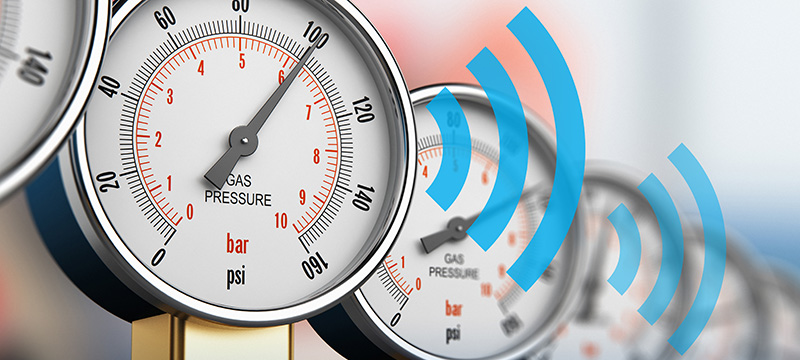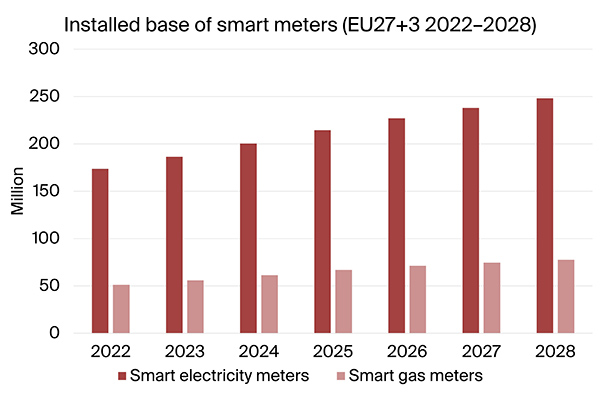
According to a new report from the IoT analyst firm Berg Insight, the installed base of smart gas meters in Europe amounted to 55.9 million in 2023, equivalent to a penetration rate of 45 percent.
The installed base is forecasted to grow at a CAGR of 6.8 percent between 2023 and 2028, reaching 77.6 million units at the end of the period. Annual shipment volumes amounted to 4.8 million units in 2023 and are expected to be around 5.0–5.8 million throughout the forecast period.
The UK, Italy and Belgium were the most active markets, together accounting for 86 percent of all smart gas meter shipments during the year. While the rollouts in Italy, France and the Netherlands are largely completed, the UK market is finally after several delays ramping up yearly installations to reach a peak of 3.2–3.4 million units per year during 2024–2025. Belgium and Ireland are two other markets that are expected to contribute with significant shipment volumes in the coming years. The Spanish market is expected to reach yearly shipment volumes of 1.0 million units by the end of the forecast period.
The smart gas meters deployed in Europe have over the past years not been networked in quite the same way as their counterparts in the electricity sector. A common model, observed in the UK, the Netherlands and Belgium, is to utilize a local wireless or wired interface to transmit gas data via the customer’s smart electricity meter. A mix of 169 MHz RF and 2G/3G cellular communications has meanwhile been the primary model for the largest projects in which smart gas meters have been deployed independently of smart electricity meters, such as in Italy and France. A change of the status quo is likely on the horizon as new types of LPWA technologies have become more readily available in the past couple of years.
Mattias Carlsson, IoT Analyst at Berg Insight, said:
“The Italian gas sector was the first in Europe to initiate large-scale adoption of NB-IoT as a primary smart meter connectivity choice and in 2023 the installed base of gas meters with NB-IoT connectivity in the country reached more than 2.5 million at the end of the year. We anticipate that by the end of the forecast period NB-IoT will become the go-to connectivity option for smart gas meters, not only in Italy but also in several other European markets.”

The composition of communications technologies in the installed base of smart gas meters has already begun to shift in favor of new LPWA technologies. 169 MHz still however remains the most popular communications technology with a market share of around 37 percent at the end of 2023, while Zigbee boasted a market share of 26 percent. By 2026, Zigbee is expected to surpass 169 MHz as the most prevalent connectivity option with an installed base of 23.4 million – a number that is further forecasted to increase to 25.5 million in 2028.
NB-IoT/LTE-M is expected to be the fastest growing connectivity option at a CAGR of 35 percent during 2023–2028 to reach an installed base of around 13.2 million units in 2028 and accounting for as much as 60 percent of yearly shipment volumes at the end of the forecast period.
Another emerging technology trend is the anticipated increase in the use of hydrogen in European gas supply operations.
Mr. Carlsson concluded:
“Projects are currently underway in for example the UK and Italy that pilots metering devices capable of measuring either pure hydrogen or a blend of hydrogen and natural gas. The interest in hydrogen meters is anticipated to increase as the technology matures.”





